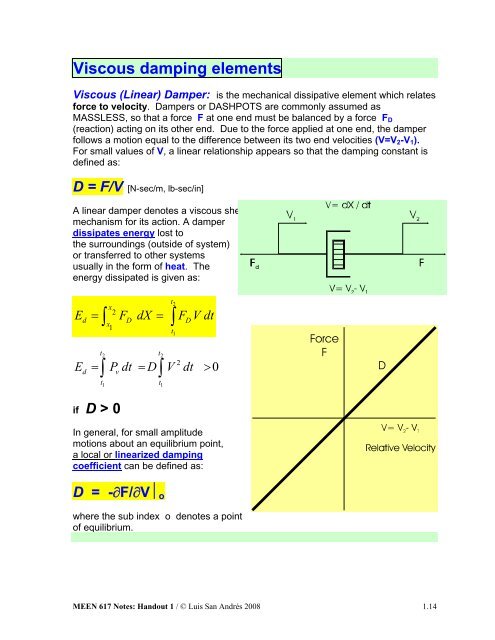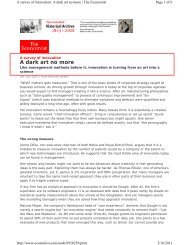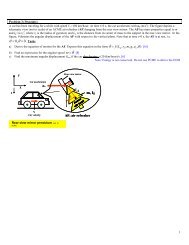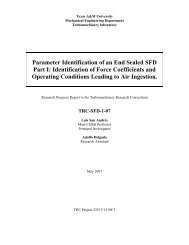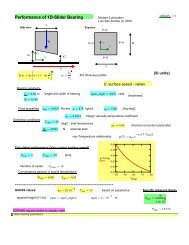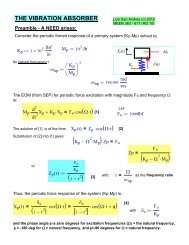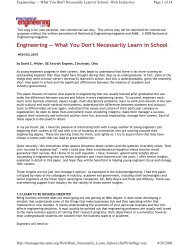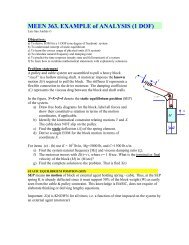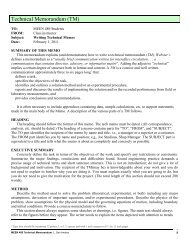Modeling of Mechanical (Lumped Parameter) Elements
Modeling of Mechanical (Lumped Parameter) Elements
Modeling of Mechanical (Lumped Parameter) Elements
You also want an ePaper? Increase the reach of your titles
YUMPU automatically turns print PDFs into web optimized ePapers that Google loves.
Viscous damping elementsViscous (Linear) Damper: is the mechanical dissipative element which relatesforce to velocity. Dampers or DASHPOTS are commonly assumed asMASSLESS, so that a force F at one end must be balanced by a force F D(reaction) acting on its other end. Due to the force applied at one end, the damperfollows a motion equal to the difference between its two end velocities (V=V 2 -V 1 ).For small values <strong>of</strong> V, a linear relationship appears so that the damping constant isdefined as:D = F/V [N-sec/m, lb-sec/in]A linear damper denotes a viscous shearmechanism for its action. A damperdissipates energy lost tothe surroundings (outside <strong>of</strong> system)or transferred to other systemsusually in the form <strong>of</strong> heat. Theenergy dissipated is given as:t2x2d= ∫xD= ∫ D1tE F dX F V dt1t2 t22Ed∫ Pvdt D∫V dttt= = > 0if D > 01 1In general, for small amplitudemotions about an equilibrium point,a local or linearized dampingcoefficient can be defined as:D = -∂F/∂V⏐ owhere the sub index o denotes a point<strong>of</strong> equilibrium.MEEN 617 Notes: Handout 1 / © Luis San Andrés 2008 1.14


